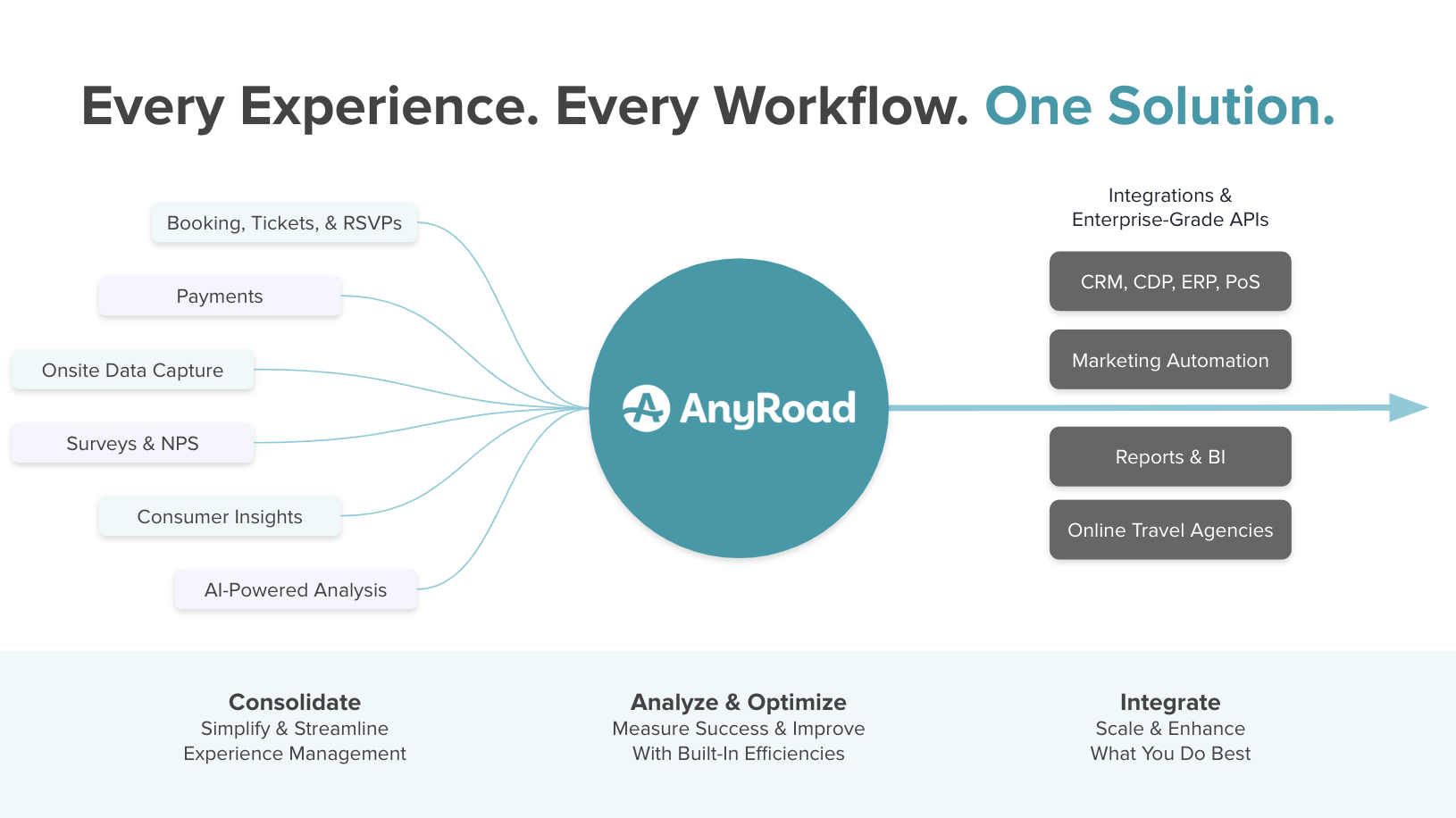Nobody understands your brand experiences better than the people who lived it. And there’s no better way to learn what people love (or don’t love) than to ask them.
Customer feedback delivers the simplest and most actionable pathway to increase the return on investment (ROI) of your experiential marketing strategy, drive greater brand awareness, build more loyal consumers, and improve operational efficiency.
The trick to consistent improvement? Simple: build a customer feedback loop that fuels better brand experiences.
But there’s a downside to the feedback loop: it’s precise, but extremely manual. Manually reviewing text feedback, identifying trends across all responses, and drawing precise conclusions is difficult and time-consuming. The problem gets worse as your brand experiences grow and you continue to collect more feedback.
Thankfully, there’s never been a better way to build and automate your feedback loop.
Introducing Pinpoint: Your AI-Powered Feedback Assistant
Pinpoint is the world’s first AI-powered feedback analysis tool built for brand experiences. It takes the manual, meticulous work of analyzing and interpreting every word of customer feedback and puts it in the hands of your AI-powered feedback assistant.

With world-class, AI-driven analysis, you can uncover trends in real-time, better understand your consumers, and quickly make improvements without manually wading through every piece of feedback.
When combined with AnyRoad’s Experience Manager and automated follow-up surveys, Pinpoint removes all manual intervention from your customer feedback loop.

Following a brand experience, AnyRoad automatically collects customer feedback and loads it into Pinpoint for real-time analysis. Pinpoint then summarizes results and recommendations for improvement so you can quickly take action, make precise improvements, and build stronger consumer relationships.
Check it out for yourself!
What is a customer feedback loop?
AI is making customer feedback more useful and scalable than ever before, but let’s take a step back. What is a customer feedback loop?
A customer feedback loop is the end-to-end cycle of collecting, analyzing, and taking action on your customers' feedback.
Collecting and analyzing feedback allows you to understand each consumer’s experience better and gather more precise detail on what they liked and didn’t like. You can then close the feedback loop by responding directly to consumers and improving based on their feedback.
When designed and implemented effectively, your customer feedback loop helps you:
- Monitor trends in consumer experiences to take advantage of opportunities and stay ahead of the competition
- Identify what consumers enjoy most and double down on what’s working
- Correct poor experiences before they negatively impact your brand
- Prioritize improvements that will maximize the impact of each experience
- Build lasting customer relationships by delivering what consumers want
Customer feedback loops for experiential marketing
Although customer feedback loops are useful for nearly every business and consumer interaction, brand experiences stand in a class of their own.
Instead of learning and measuring how a customer feels about a specific product or service, you need to measure how they feel about their experience with your brand — whether it’s an on-site tour, VIP event, or even a three-minute encounter at a field activation.
Leading experiential marketing platforms, like AnyRoad, have made it easier than ever to measure and quantify the impact of brand experiences by tracking direct influence on ROI, brand affinity, operational efficiency, and more. However, understanding exactly why a brand experience exceeds or fails to meet expectations is more complicated.
That’s where your customer feedback loop comes in.

How it works
- Collect contact information from every consumer who attends your brand experience (this part is easier than you think)
- Follow up with consumer to collect NPS, open-ended feedback, and survey responses
- Review and analyze every response to learn about individual experiences and identify trends
- Take action by responding directly to consumers and/or making improvements based on feedback
- Repeat
Customer feedback fills gaps and unanswered questions about your brand experiences and provides clear pathways to improvement. A well-managed customer feedback loop can be the difference between a successful experiential marketing strategy and one struggling for buy-in and budget.
With Pinpoint, you eliminate the most time-consuming, manual tasks of your feedback loop, including: reading feedback, identifying trends, and summarizing what is more important. This saves you time without sacrificing the precise insights you need to monitor and continuously improve your brand experiences at scale.
Are you ready to embrace the power of AI in your experiential marketing strategy and supercharge your brand experiences?






%2012.57.51%E2%80%AFa.m..png)
